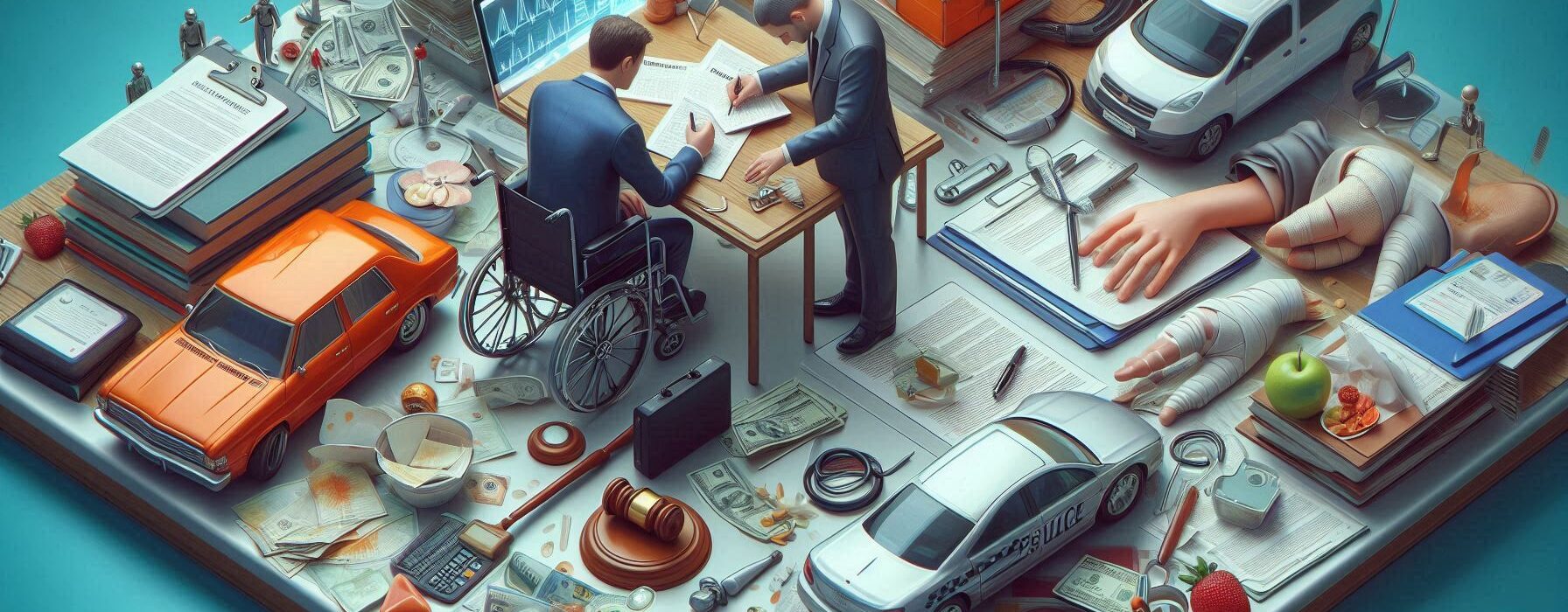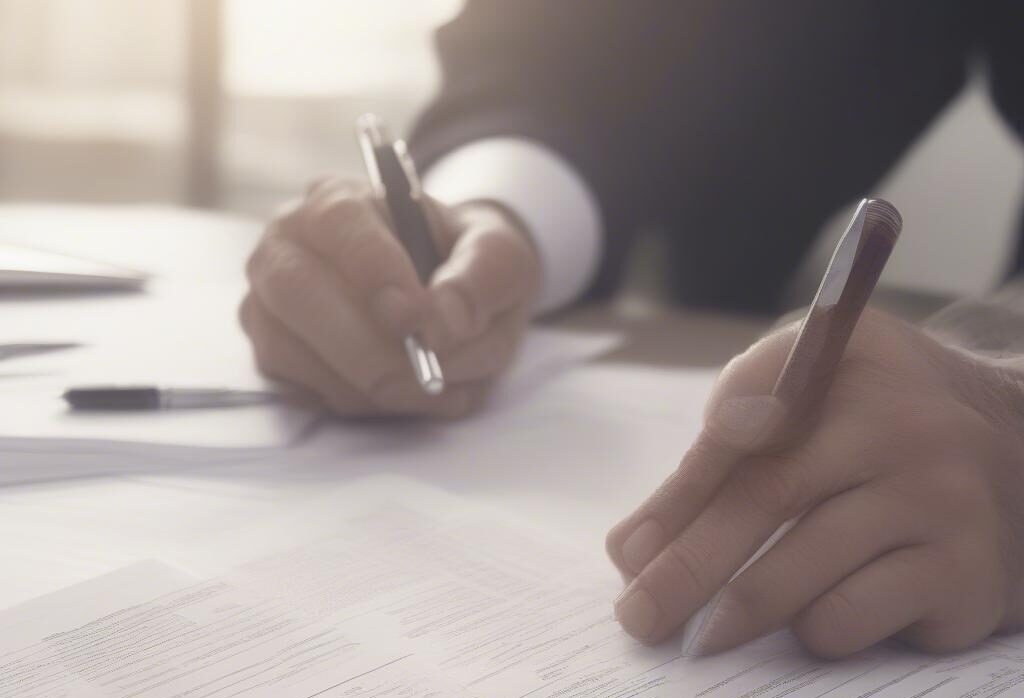Please Note: This post may contain affiliate links. If you click one of them, we may receive a commission at no extra cost to you. As an Amazon Associate, I earn from qualifying purchases.
So, you’ve had an unfortunate encounter with a banana peel or maybe that rogue shopping cart at the grocery store.
Now you’re wondering how to prove liability in your personal injury claim. It’s like trying to solve a mystery where the main suspect is often a slippery slope—pun intended! Let’s dive into this legal labyrinth together, shall we?

Top Takeaways and Key Concepts
Understand Liability: Establish duty of care, breach of duty, causation, and damages to prove responsibility.
Identify Duty of Care: Determine if the responsible party had an obligation to prevent harm.
Prove Breach of Duty: Collect evidence showing unreasonable actions or neglect caused the injury.
Demonstrate Causation: Show that the harm would not have occurred but for the other party’s actions.
Document Damages Thoroughly: Track medical bills, lost wages, and pain and suffering for compensation claims.
Summary of This Article
The article explains how to prove liability in personal injury claims by focusing on four key elements: duty of care, breach of duty, causation, and damages. It emphasizes the importance of gathering strong evidence, including photos, witness statements, medical records, and accident reports, to build a solid case. Consulting a personal injury attorney can provide guidance on navigating legal complexities. Meticulous documentation and strategic planning increase the likelihood of receiving fair compensation for financial and emotional losses resulting from accidents or negligence.
Understanding Liability: What Does It Mean?

First things first: what exactly is liability? In simple terms, it means someone is responsible for causing harm. Imagine you’re playing dodgeball and someone throws the ball too hard, hitting you right in the face.
If they did it on purpose (or even if they just weren’t paying attention), they could be liable for your bruised ego and possibly more serious injuries.
Now, when we talk about proving liability in a personal injury case, we’re looking at four key elements: duty of care, breach of duty, causation, and damages. Sounds fancy, right? But don’t worry; I’ll break it down like my grandma breaking down her famous chocolate chip cookie recipe!
Duty of Care: The First Step

Duty of care refers to the responsibility one person has to avoid causing harm to another. For example, drivers have a duty to follow traffic laws and not drive like they’re auditioning for a Fast & Furious movie. If you’re injured because someone failed in their duty—like running a red light—then you’ve got yourself a potential claim.
But here’s where it gets tricky: not everyone has the same level of duty. A doctor has a higher standard than your average Joe who might accidentally spill coffee on you during a meeting. So, understanding these nuances can help solidify your case.
Breach of Duty: The Oops Factor
Next up is the breach of duty. This occurs when someone fails to meet their obligation—think of it as them slipping on that metaphorical banana peel themselves! Maybe they were texting while driving or ignoring basic safety protocols at work.
To prove this element, you’ll need evidence showing that the other party acted unreasonably under the circumstances. Did they ignore warning signs? Were they distracted? Collecting witness statements or video footage can be crucial here—especially if those witnesses are willing to testify about what happened!
Causation: Connecting the Dots
Now let’s talk causation—the “but-for” test of personal injury claims! You must demonstrate that but for the other person’s actions (or lack thereof), your injury wouldn’t have occurred. If you slipped on that wet floor because there was no sign warning you about it, then bingo! You’ve established causation.
However, sometimes it’s not so clear-cut. Maybe several factors contributed to your fall—or maybe you were juggling flaming torches while walking on stilts (not recommended). In such cases, having strong evidence becomes even more critical.
Damages: Show Me the Money!
Alrighty then! We’ve established liability through duty and breach; now let’s get down to damages—the part where we talk dollars and cents! You’ll need to show how much your injuries have cost you financially—and emotionally too.
This includes medical bills (which can pile up faster than laundry after vacation), lost wages from missing work, and pain and suffering—which sounds dramatic but is very real! Document everything meticulously; keep receipts and notes from doctors like they’re sacred scrolls detailing your epic battle against misfortune.
Gathering Evidence Like Sherlock Holmes
Okay folks, gather around because this is where we channel our inner detectives! To prove liability effectively requires good old-fashioned sleuthing skills—or at least some modern technology! Start by collecting all relevant evidence immediately after an accident:
1. Photos: Snap pictures of everything—from injuries to surroundings.
2. Witnesses: Get names and contact info before they disappear like socks in a dryer.
3. Medical Records: Keep track of every appointment as if it’s an Olympic event.
4. Accident Reports: If police were involved, obtain copies—they’re gold!
By assembling this information carefully, you’re building a fortress around your claim—a fortress made out of undeniable facts rather than shaky assumptions.
Consulting Professionals: When in Doubt
Sometimes navigating these waters feels overwhelming—kind of like trying to find Wi-Fi in an airport terminal! So why not bring in reinforcements? Consulting with experienced personal injury attorneys can provide clarity amid chaos.
They know all those pesky legal ins-and-outs that can trip up everyday folks like us who just want fair compensation for our troubles. Plus, many offer free consultations initially; think of it as getting expert advice without committing yet!
Conclusion: Taking Action
In conclusion (yes folks—it’s time!), proving liability in personal injury claims isn’t just about shouting “I’m right!” from atop a soapbox—it requires methodical planning and gathering evidence strategically along with legal knowledge.
Remember these steps next time life throws unexpected challenges your way—and hopefully keep those banana peels away from your path!
Suggested Resources:
Understanding Negligence
https://www.nolo.com/legal-encyclopedia/understanding-negligence-29740.html
How to Prove Fault After an Accident
https://www.alllaw.com/articles/nolo/personal-injury/how-to-prove-fault-after-an-accident.html
Personal Injury Claims Process
https://www.lawyers.com/legal-info/research/personal-injury-claims-process.html
Frequently Asked Questions
What are the main elements needed to prove liability in a personal injury claim?
To prove liability, you must establish four elements: duty of care, breach of duty, causation, and damages, supported by solid evidence like photos and reports.
What does “duty of care” mean in a personal injury case?
Duty of care refers to a person’s legal responsibility to act reasonably to avoid harming others, such as a driver obeying traffic laws or a store maintaining safe premises.
How can I prove a breach of duty occurred?
Show that the responsible party acted negligently or unreasonably, using evidence like witness statements, video footage, or documentation of ignored safety measures.
What is “causation” and why is it important?
Causation links the defendant’s actions directly to your injury. You must demonstrate that your harm would not have occurred if not for their negligence or misconduct.
What types of damages can I claim in a personal injury case?
Damages include medical expenses, lost wages, pain and suffering, and emotional distress. Keeping detailed records of all costs strengthens your claim.
What evidence is most helpful in proving liability?
Useful evidence includes photographs of the scene, witness contact information, accident or police reports, and medical documentation related to your injuries.
Should I hire a lawyer for my personal injury claim?
Consulting a personal injury attorney can be beneficial, especially for complex cases. They can help gather evidence, negotiate settlements, and represent your best interests.

Kevin Collier is a legal expert passionate about simplifying complex legal concepts for everyday individuals. With a focus on providing clear, practical information, he covers a wide range of topics, including rights, responsibilities, and legal procedures. Kevin aims to empower readers with the knowledge they need to navigate the legal landscape confidently, ensuring they can make informed decisions regarding their legal matters. Through insightful articles and easy-to-understand resources, he helps demystify the law, making it accessible to all.










